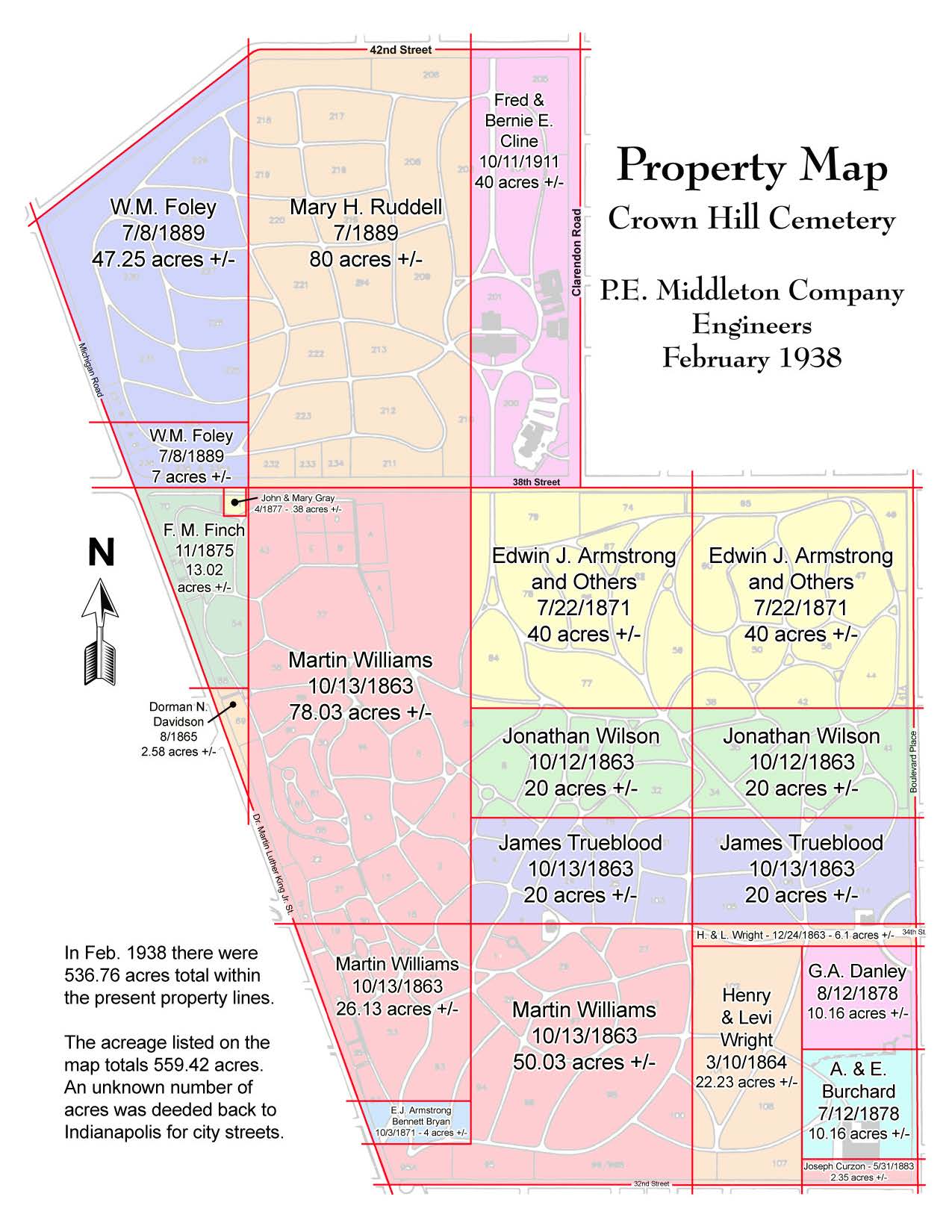History of Rural Cemeteries

Cemeteries like Crown Hill were not the traditional means for caring for the dead in the early days of Indiana’s history. Early settlers had religious burial grounds, usually next to their place of worship; family plots, usually on personal property; and public cemeteries, usually in the heart of the city. It was these larger, public cemeteries very near to a population center, which concerned community leaders. The large number of decomposing bodies that then leached into the soil and water table, raised health concerns.
In Europe and eventually America, a movement started known as the Rural Cemetery Movement. It created larger burial grounds outside of population centers. In the United States, the movement started and flourished on the east coast beginning in 1831 with Mount Auburn in Boston, Laurel Hill in Philadelphia (1836), and Greenwood in New York. (1838). It took until the 1850s for the movement to catch on in Indiana.
The landscape design of the rural cemetery also mirrored changing attitudes toward death. Images engraved on the tombstones were of hope and immortality. In the rural cemetery, statues depicted angels, botanical motifs, and religious iconography. This was in stark contrast to the puritanical glumness and view of imminent death depicted in earlier cemeteries.
From their development, rural cemeteries were intentionally designed for public use. It was a place for enjoying the outdoors and escaping the crowded and dirty downtown areas. These cemeteries were the first public parks. View sheds were designed by manipulating the landscape, planting trees and other flora, and placement of graves and tombstones. No longer did the burial have to be an east/west orientation. Instead, graves and family plots were designed with the topography in mind and positioned around larger family monuments.
However, the popularity of rural cemeteries decreased toward the end of the 19th century because of the high cost of maintenance, development of true public parks, and our changing views of death, graves, and remembrance. Replaced by lawn cemeteries and memorial parks, rural cemeteries became remnants of the past.

